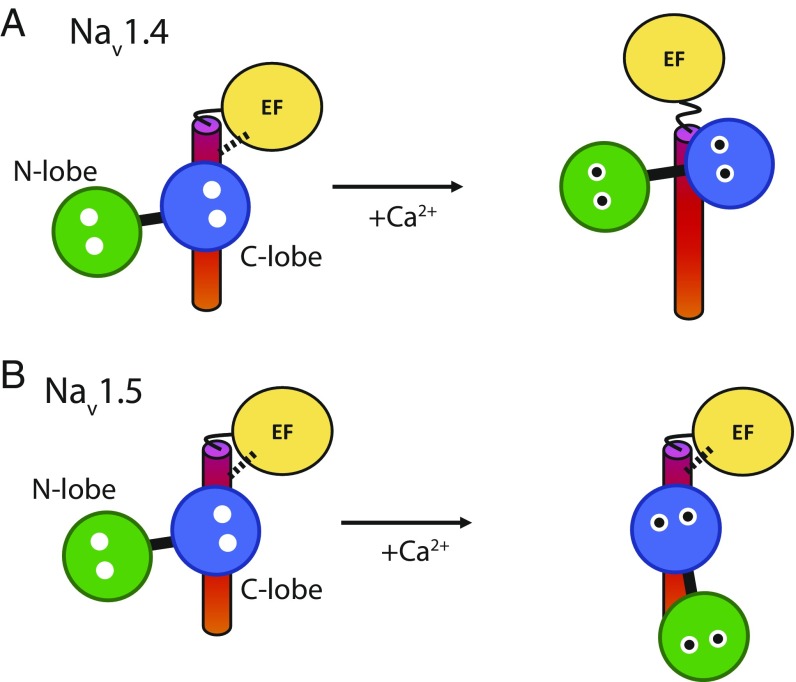Fig. 8.
Potential conformational switch mechanism for CDI. (A) NaV1.4. Under Ca2+-free conditions, CaM can bind to the IQ domain without disturbing the orientation of EF-hand domain to the IQ domain (salt bridge indicated by dotted line). Upon binding Ca2+, the Ca2+/C-lobe switches to a different site and dislodges the EF-hand domain. As the EF-hand domain can also bind to the III–IV linker, an interaction that modulates inactivation (14), this could then affect inactivation. (B) NaV1.5. Under both Ca2+-free and Ca2+-loaded conditions, CaM can bind to the IQ domain without disturbing the EF-hand domain. Therefore, no conformational change occurs that could be linked to CDI.

